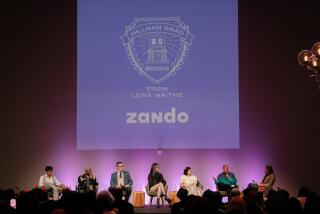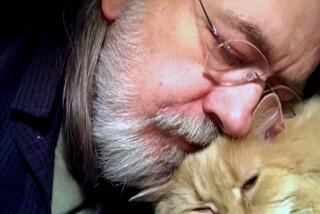400-year-old joke
- Share via
Some people can’t resist the lure of mysterious riddles and lost civilizations. Visiting Fiesole in Tuscany in 1920, D.H. Lawrence sensed the presence of the vanished Etruscans lingering in the cypress trees:
They say only the fit survive,
But I invoke the spirits of the lost.
Those that have not survived, the darkly lost,
To bring their meaning back into life again ...
In 1634, 19-year-old Curzio Inghirami and his younger sister Lucrezia came upon a strange object in the riverbank below their family villa, Scornello, near the Tuscan city of Volterra: a capsule of hair and mud containing layers of paper inscribed with strange words in a strange alphabet. It was the legacy, apparently, of an Etruscan seer who had lived at the time of Cicero, when the Roman army was conquering the Etruscan cities of Volterra and Fiesole. Faced with the destruction of his culture and language, the prophet had consigned his prophecies to capsules, or “scarith,” to be dug up at some later date.
Curzio soon discovered more scarith in the vicinity. He reported his discovery to the local learned society and published an expensive, lavishly illustrated book titled “Ethruscarum Antiquitatum Fragmenta,” giving details of his findings. Expected by his family to train for a career in law, Curzio had managed instead to set himself up as a kind of local historian, a vocation far closer to his heart.
There was a problem, however. It was generally known that the Etruscans wrote on linen rather than on the kind of paper contained in the scarith. Also, Etruscan was written from right to left, not, as in Curzio’s specimen, left to right. Worse yet, the seer’s handwriting bore an uncanny resemblance to Curzio’s. Soon, a full-scale controversy was in play involving scholars from all over Europe -- at least one expert dismissed the book as a pile of manure.
There is no doubt that the scarith were a forgery; neither is there doubt about the forger’s identity. What was Curzio’s motive? Plunging us into the politics and beliefs of 17th century Italy, scholar Ingrid D. Rowland reconstructs the whole story with flair and zest. The vanished Etruscans had great romantic and patriotic appeal for 17th century Tuscans. Curzio, she believes, was inspired by a genuine love of history along with a high-spirited prankishness that led him to perpetrate what was, in effect, an elaborate practical joke: “No wonder Curzio and Lucrezia ... greeted the discovery of the first scarith by doubling over with laughter. What fun they must have had creating them!” Indeed, there is no such word as “scarith,” not even in Etruscan: Curzio made it up. No wonder D.H. Lawrence also detected
The smile, the subtle Etruscan smile still lurking
Within the tombs,
Etruscan cypresses.
He laughs longest who laughs last ... *
More to Read
Sign up for our Book Club newsletter
Get the latest news, events and more from the Los Angeles Times Book Club, and help us get L.A. reading and talking.
You may occasionally receive promotional content from the Los Angeles Times.







